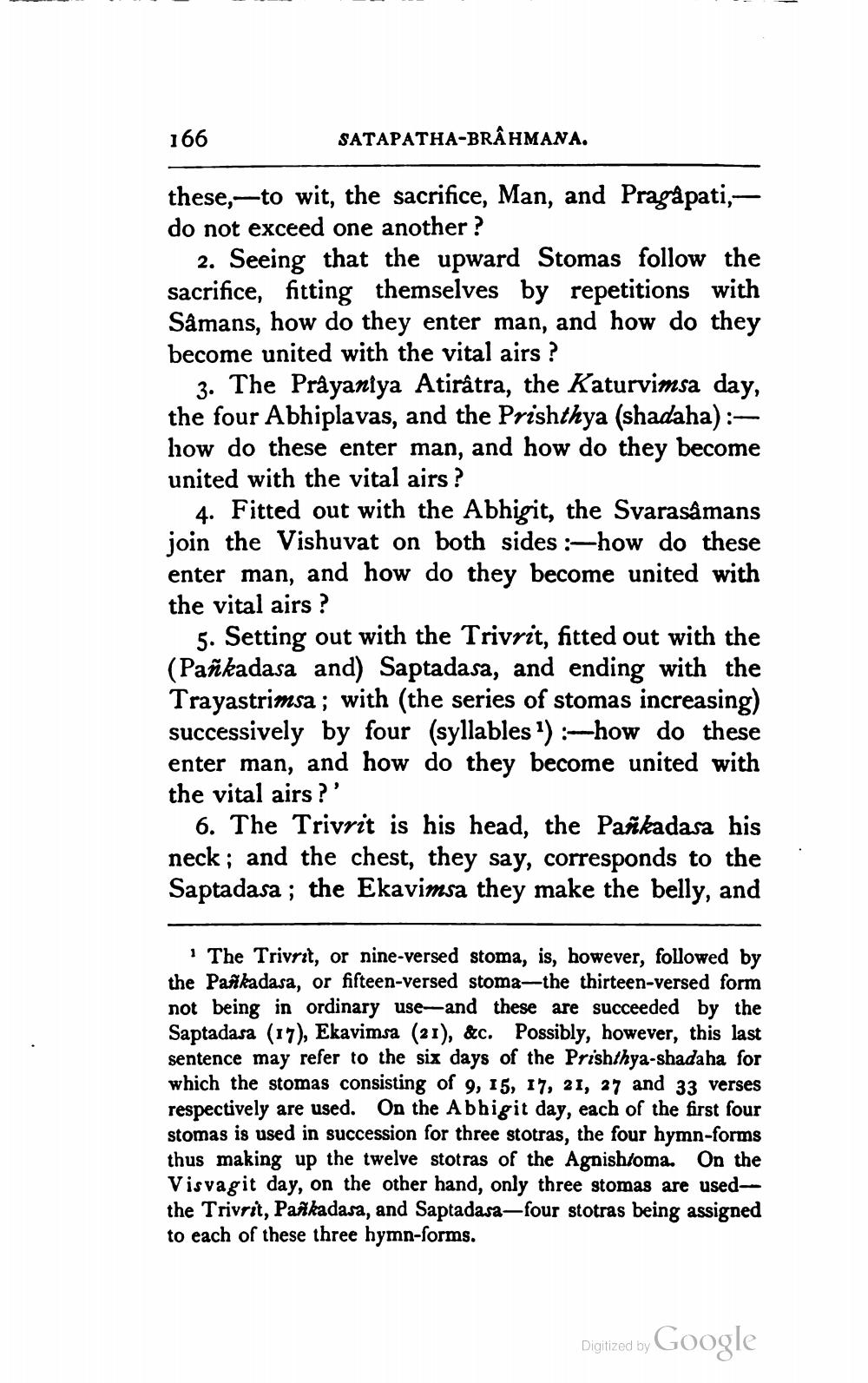________________
166
SATAPATHA-BRÂHMANA.
these,—to wit, the sacrifice, Man, and Pragàpati, do not exceed one another ?
2. Seeing that the upward Stomas follow the sacrifice, fitting themselves by repetitions with Såmans, how do they enter man, and how do they become united with the vital airs ?
3. The Prayaniya Atirâtra, the Katurvimsa day, the four Abhiplavas, and the Prishthya (shadaha):how do these enter man, and how do they become united with the vital airs ?
4. Fitted out with the Abhigit, the Svarasämans join the Vishuvat on both sides :-how do these enter man, and how do they become united with the vital airs ?
5. Setting out with the Trivrit, fitted out with the (Pañkadasa and) Saptadasa, and ending with the Trayastrimsa ; with (the series of stomas increasing) successively by four (syllables ) :-how do these enter man, and how do they become united with the vital airs?'
6. The Trivrit is his head, the Pañkadasa his neck; and the chest, they say, corresponds to the Saptadasa ; the Ekavimsa they make the belly, and
· The Trivrit, or nine-versed stoma, is, however, followed by the Pafkadasa, or fifteen-versed stoma—the thirteen-versed form not being in ordinary use--and these are succeeded by the Saptadasa (17), Ekavimsa (21), &c. Possibly, however, this last sentence may refer to the six days of the Prishthya-shadaha for which the stomas consisting of 9, 15, 17, 21, 27 and 33 verses respectively are used. On the Abhigit day, each of the first four stomas is used in succession for three stotras, the four hymn-forms thus making up the twelve stotras of the Agnishtoma. On the Visvagit day, on the other hand, only three stomas are used the Trivrit, Pankadasa, and Saptadasa-four stotras being assigned to each of these three hymn-forms.
Digitized by Google




